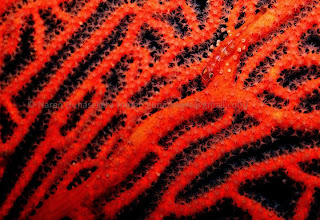Is generally all you have at 36 meters before your bottom time runs out. At 36 meters you are under 3.5 atmospheres of pressure. This means that your ears will pop like crazy as you descend and more importantly you will use your air correspondingly quicker. Your bloodstram also will absorb nitrogen faster at greater depths, and you become saturated with nitrogen (for a super analogy check here. Coming up too quickly in such a situation will cause the nitrogen to bubble out of your blood stream like a coke bottle with its top removed. This is mildly unpleasant to say the least, leading to the dreaded ‘bends.’
The combination of faster air consumption and nitrogen saturation means going into decompression on deep dives is especially dangerous as you run the risk of breathing your tank dry during an extended decompression stop. For the uninitiated this is the period of time you spend hanging at around 3-4 meters of water while the absorbed nitrogen leaves your system. Not a fun thing to do when you have many minutes of hanging around while worrying about running out of air and trying not to pop to the surface inadvertently (the effect on one's sinuses also leaves a lot to be desired).
At 36 meters however and about 30 minutes by boat lies an underwater garden, huge Gorgonian sea fans dotted on a sandy plain swept by strong currents. The presence of the fans means that dropping an anchor is a no-no. You basically have to throw yourself off the boat some meters up from the GPS point, grab your camera from the waiting boatman and swim down as quickly as possible, trying to keep yourself oriented in the right direction, keeping an eye on your buddy(ies) and equalizing frantically to prevent your sinuses from imploding. Of course all this time you have to keep an eye on your gear to make sure everything is working properly. Needless to say this is complex and this site is only for the experienced diver.
Once you hit the bottom you have to find your photographic subject. For those with wide-angle lenses and dual strobes (i.e. DJ from Divesrilanka.com and Nishan from Seas of Serendipity) the subject matter is often the fans themselves. These with the camera metered for the blue background and the strobes providing fill flash, make beautiful subjects.
For a macro head like me (mostly due to the limitations of the DX-2G rig I carry), the subject are the coral gobies on the fans. Usually you find these gobies on whip coral on the shallower reefs but singly. At the Gorgonian Gardens however some of the fans have a few skittish gobies to keep me busy. I have made a few attempts at wide angle and possibly will do some more soon.
The challenge of taking photographs in these conditions however does sometimes make land photography pale in comparison. You have to maintain your breathing to make sure you are neutrally buoyant and not go crashing into the fans, you have to ensure your fins are out of the way for the same reason, you have to keep an eye on your bottom time, an eye on your buddy(ies) and fight the surge to stay in one place.
This is of course before you actually find your subject, then spend some more time finding one that stays in one place long enough to take a picture, meter the image, figure out your exposure, strobe position, etc to make sure you’re getting a workable image. Needless to say this is challenging. And it is frustrating after you find a willing fish to hear your computer start beeping after a few frames. You can only ignore the beeping for a couple of minutes before having to accept common sense and leave the gardens for another time…on the bright side there will be another time.
The combination of faster air consumption and nitrogen saturation means going into decompression on deep dives is especially dangerous as you run the risk of breathing your tank dry during an extended decompression stop. For the uninitiated this is the period of time you spend hanging at around 3-4 meters of water while the absorbed nitrogen leaves your system. Not a fun thing to do when you have many minutes of hanging around while worrying about running out of air and trying not to pop to the surface inadvertently (the effect on one's sinuses also leaves a lot to be desired).
Unwise amount of ‘Deco’
At 36 meters however and about 30 minutes by boat lies an underwater garden, huge Gorgonian sea fans dotted on a sandy plain swept by strong currents. The presence of the fans means that dropping an anchor is a no-no. You basically have to throw yourself off the boat some meters up from the GPS point, grab your camera from the waiting boatman and swim down as quickly as possible, trying to keep yourself oriented in the right direction, keeping an eye on your buddy(ies) and equalizing frantically to prevent your sinuses from imploding. Of course all this time you have to keep an eye on your gear to make sure everything is working properly. Needless to say this is complex and this site is only for the experienced diver.
DJ behind a fan, should give you some idea of the size of the Gorgonians
Once you hit the bottom you have to find your photographic subject. For those with wide-angle lenses and dual strobes (i.e. DJ from Divesrilanka.com and Nishan from Seas of Serendipity) the subject matter is often the fans themselves. These with the camera metered for the blue background and the strobes providing fill flash, make beautiful subjects.
A wide angle shot courtesy of DJ (Divesrilanka.com)
For a macro head like me (mostly due to the limitations of the DX-2G rig I carry), the subject are the coral gobies on the fans. Usually you find these gobies on whip coral on the shallower reefs but singly. At the Gorgonian Gardens however some of the fans have a few skittish gobies to keep me busy. I have made a few attempts at wide angle and possibly will do some more soon.
The first goby I photographed at Gorgonian Gardens. He seems a bit surprised.
Recent wide angle effort (no colour so no good)
The challenge of taking photographs in these conditions however does sometimes make land photography pale in comparison. You have to maintain your breathing to make sure you are neutrally buoyant and not go crashing into the fans, you have to ensure your fins are out of the way for the same reason, you have to keep an eye on your bottom time, an eye on your buddy(ies) and fight the surge to stay in one place.
This is of course before you actually find your subject, then spend some more time finding one that stays in one place long enough to take a picture, meter the image, figure out your exposure, strobe position, etc to make sure you’re getting a workable image. Needless to say this is challenging. And it is frustrating after you find a willing fish to hear your computer start beeping after a few frames. You can only ignore the beeping for a couple of minutes before having to accept common sense and leave the gardens for another time…on the bright side there will be another time.
Last Friday’s workable image.







